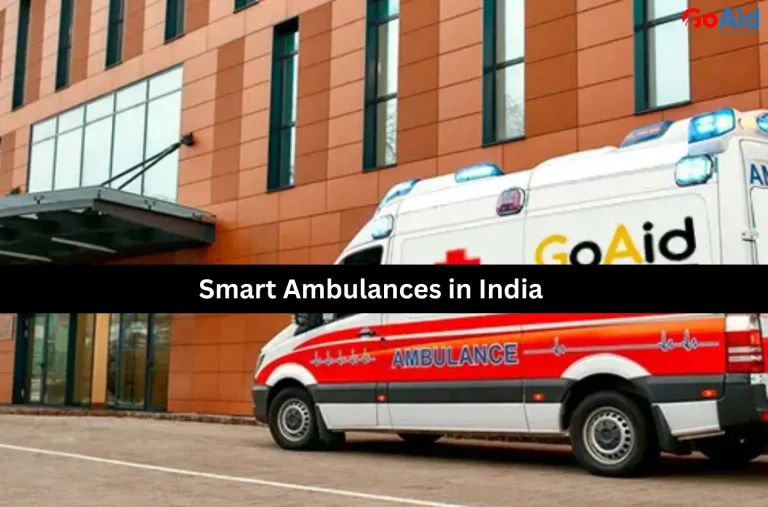Recently, news was in the headlines that a 17-year-old boy hit two people on the road with the car he driving. Both of the victims died due to severe injuries. These types of accidents are horrible and disturb an entire family for their lives.
In India, unfortunately, the Road Accidents are as normal as walking people on the road. Indeed itŌĆÖs not a thing to take pride & we should make people aware of road accidents and safety measures they can take to decrease the rate of road accidents.
This is why, in this blog, we have added a complete set of details about Road Accidents in India. If you are also excited to know about the Road Accidents in India & ways through which we can avoid these accidents from happening, then read our blog to the very end.
So, letŌĆÖs start-
Details about Road Accidents in India
Road accidents in India are a major public safety concern. We are a country with road accidents in India statistics of over 150,000 fatalities annually, according to the National Crime Records Bureau (NCRB). India, home to just 1% of the world’s vehicles, accounts for nearly 11% of global road accident deaths.
The Ministry of Road Transport and Highways (MoRTH) reports that around 4.5 lakh accidents occur each year which turns out to be 1250 Road Accidents in India per day, and that also causes us significant economic losses. Studies reveal that over-speeding, drunken driving and non-compliance with traffic rules are the primary causes. The World Health Organization (WHO) highlights that IndiaŌĆÖs roads are among the deadliest, necessitating urgent implementation of effective safety measures.
Different types of Road Accidents in India
These are the Top 10 Different Types of Road Accidents in India:
- Head-On Collisions: These occur when two vehicles traveling in opposite directions collide with each other frontally. They are often the result of over-speeding, wrong-side driving, or overtaking on narrow roads.
- Rear-End Collisions: These happen when one vehicle crashes into the back of another. Common causes include sudden braking, distracted driving, or tailgating.
- Side-Impact Collisions: Also known as T-bone or broadside accidents, these occur when the side of one vehicle is hit by the front or rear of another vehicle. They typically happen at intersections or when making turns.
- Vehicle Rollovers: These involve a vehicle tipping over onto its side or roof. Rollovers can be caused by sharp turns at high speeds, collision impact, or driving on uneven surfaces, and are particularly dangerous for high-center-of-gravity vehicles like SUVs and trucks.
- Pedestrian Accidents: These involve vehicles colliding with pedestrians. Such accidents are prevalent in urban areas with high foot traffic and can result from jaywalking, speeding, or failure to yield.
- Two-Wheeler Accidents: Common in India, these involve motorcycles and scooters. They often result from over-speeding, lack of protective gear, poor road conditions, or collisions with larger vehicles.
- Hit-and-Run Accidents: These occur when a driver involved in an accident flees the scene without providing assistance or identifying themselves. Hit-and-run incidents can involve any type of road user and often lead to severe consequences for the victims due to delayed medical aid.
- Multi-Vehicle Pile-Ups: These accidents involve multiple vehicles and often occur on highways due to high speeds and chain-reaction collisions. Poor visibility, fog, and slippery roads can also contribute to such pile-ups.
- Animal-Related Accidents: In rural and some urban areas, collisions with stray or wild animals can lead to severe accidents. These incidents often happen when animals unexpectedly cross the road, causing drivers to swerve or brake suddenly.
- Single-Vehicle Accidents: These involve only one vehicle and can be due to losing control, hitting a stationary object, or running off the road. Common causes include driver fatigue, distraction, or adverse weather conditions.
Key Reason behind the increased Road Accidents in India
These are the main causes of road accidents in India at this high level:
1. Over-Speeding
Excessive speed remains one of the primary causes of road accidents in India. High speeds significantly reduce the driver’s reaction time, making it difficult to respond to sudden changes in traffic conditions. Moreover, the impact of collisions at higher speeds tends to be more severe, resulting in greater damage and higher fatality rates.
2. Drunken Driving
Driving under the influence of alcohol is a major contributor to road accidents. Alcohol impairs cognitive functions, reduces coordination, and slows reaction times, all of which are critical for safe driving. Despite stringent laws, incidents of drunken driving continue to be a significant issue.
3. Distracted Driving
Distractions such as using mobile phones, eating, or interacting with passengers can divert the driver’s attention from the road. Even a momentary lapse in attention can lead to accidents, as drivers may fail to notice changes in traffic signals, pedestrian crossings, or obstacles.
4. Non-Compliance with Traffic Rules
Many road users in India do not adhere to traffic regulations. Common violations include running red lights, improper lane changes, and failure to yield the right of way. Such behaviors create chaotic traffic conditions and increase the risk of collisions.
5. Poor Road Conditions
Many roads in India suffer from inadequate maintenance, resulting in potholes, uneven surfaces, and a lack of proper signage. These poor conditions can cause drivers to lose control of their vehicles, leading to accidents, especially at night or during adverse weather conditions.
6. Inadequate Infrastructure
The road infrastructure in many areas is insufficient to handle the growing volume of traffic. Issues such as narrow roads, lack of pedestrian crossings, and insufficient lighting contribute to accidents. Additionally, poorly designed intersections and roundabouts can confuse drivers and lead to collisions.
7. Overloading Vehicles
Transporting goods and passengers beyond the vehicle’s capacity affects its handling and braking efficiency. Overloaded vehicles are more prone to tipping over or suffering mechanical failures, increasing the likelihood of accidents.
8. Lack of Road Safety Awareness
There is a general lack of awareness and education about road safety measures among drivers and pedestrians. Many individuals are not familiar with basic traffic rules and safe driving practices, which leads to risky behavior on the roads.
9. Vehicle Malfunctions
Mechanical failures due to poor vehicle maintenance are a significant cause of accidents. Issues such as brake failures, tire blowouts, and engine malfunctions can cause drivers to lose control of their vehicles, leading to crashes.
10. Driver Fatigue
Long hours of continuous driving without adequate rest can lead to driver fatigue. Fatigue impairs concentration, reduces reaction times, and increases the likelihood of falling asleep at the wheel, all of which can result in serious accidents.
Safety Measures we can take to reduce Road Accidents in India
We can take these safety measures to the implementations to reduce road accidents in India:
1. Strict Enforcement of Traffic Laws
Implementing and strictly enforcing traffic laws can significantly reduce road accidents. This includes stringent penalties for over-speeding, drunken driving, and other violations to deter unsafe driving behaviors.
2. Improving Road Infrastructure
Upgrading road infrastructure, such as widening roads, repairing potholes, and installing proper signage and lighting, can enhance safety. Well-designed intersections, pedestrian crossings, and dedicated lanes for different types of vehicles can also help reduce accidents.
3. Public Awareness Campaigns
Conducting extensive road safety awareness campaigns can educate drivers and pedestrians about traffic rules, safe driving practices, and the importance of using seat belts and helmets. These campaigns can be promoted through media, schools, and community programs.
4. Regular Vehicle Maintenance
Ensuring that vehicles are regularly maintained and inspected for mechanical issues can prevent accidents caused by vehicle malfunctions. Drivers should be encouraged to perform routine checks on brakes, tires, and other critical components.
5. Use of Technology
Leveraging technology such as speed cameras, red-light cameras, and automated license plate recognition systems can help monitor and enforce traffic laws more effectively. Additionally, using GPS and mobile apps to provide real-time traffic updates can help drivers avoid dangerous situations.
6. Driver Training Programs
Comprehensive driver training programs can improve driving skills and knowledge. These programs should focus on defensive driving techniques, adherence to traffic rules, and the dangers of distracted and drunken driving.
7. Improving Emergency Response
Enhancing emergency response systems to provide timely medical assistance to accident victims can reduce fatalities. Establishing more trauma care centers along major highways and training first responders can improve survival rates.
8. Road Safety Audits
Conducting regular road safety audits to identify hazardous locations and implementing corrective measures can prevent accidents. This involves assessing the safety of road designs, traffic management systems, and existing infrastructure.
9. Promoting Public Transportation
Encouraging the use of public transportation can reduce the number of vehicles on the road, thereby decreasing traffic congestion and the potential for accidents. Investing in safe and efficient public transport systems is crucial.
10. Implementing Stricter Licensing Procedures
Adopting more rigorous procedures for issuing driving licenses can ensure that only qualified and competent drivers are allowed on the roads. This includes comprehensive testing of driving skills and knowledge of traffic laws.
Road Accident Laws in India
India has a comprehensive legal framework to address road safety and manage road accidents. The key legislation governing road safety is the Motor Vehicles Act, of 1988, which has been amended multiple times, with the most significant amendment being the Motor Vehicles (Amendment) Act, of 2019. Here are the main provisions:
- Stricter Penalties: The 2019 amendment introduced higher fines and stricter penalties for traffic violations such as over-speeding, drunken driving, driving without a license, and not wearing seat belts or helmets. This aims to deter reckless driving and enhance compliance with traffic laws.
- Enhanced Driver Licensing Procedures: The law mandates more rigorous testing and procedures for obtaining a driving license, ensuring that only qualified individuals are permitted to drive.
- Road Safety Boards: The Act provides for the establishment of a National Road Safety Board to advise the government on road safety standards and traffic management practices.
- Protection of Good Samaritans: The law includes provisions to protect Good Samaritans who help accident victims, ensuring they are not harassed or subjected to legal complications.
- Compensation and Insurance: The Act outlines provisions for mandatory third-party insurance for all motor vehicles. It also simplifies the process for accident victims to claim compensation.
- Regulation of Vehicle Standards: The law mandates adherence to safety standards for vehicle manufacturing and maintenance, aiming to reduce accidents caused by vehicle malfunctions.
- Electronic Enforcement: Electronic monitoring and enforcement, such as speed cameras and automated traffic signals, is encouraged to ensure compliance with traffic laws.
- Public Transportation Safety: The Act includes specific provisions for the safety of public transportation, including the regulation of driver hours and mandatory safety equipment in buses and other public vehicles.
- Child Safety Measures: Specific safety measures for children, including the use of child seats and seat belts in cars, are mandated to protect young passengers.
- Road Safety Awareness: The law emphasizes the importance of road safety education and awareness campaigns to inform the public about safe driving practices and the consequences of traffic violations.
Conclusion
Road accidents in India remain a critical public safety issue, driven by factors such as over-speeding, drunken driving, and poor road conditions. Understanding the various types of accidents and their underlying causes is essential for implementing effective safety measures.
By strictly enforcing traffic laws, improving road infrastructure, raising public awareness, and promoting safe driving practices, we can significantly reduce the incidence of road accidents. This blog has provided comprehensive details on the causes, types, and preventive measures for road accidents in India. If you have any questions or need further information, please ask in the comment box.
















